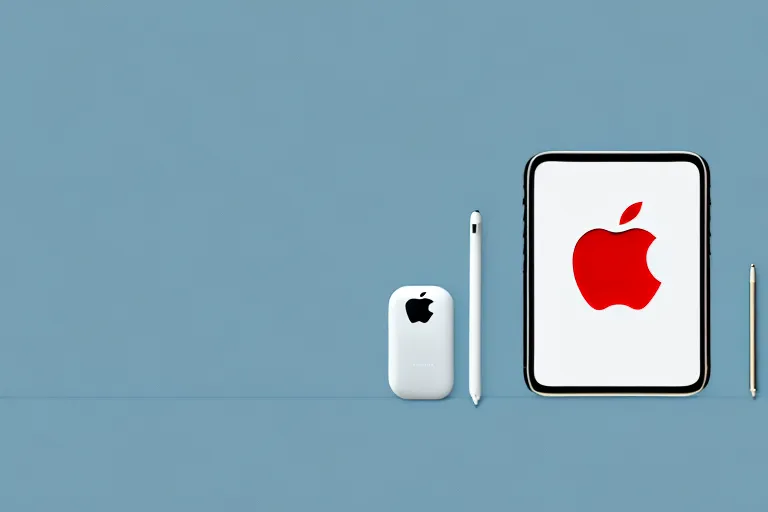The world of messaging services has evolved significantly over the years. While SMS remained the gold standard for years, several alternatives have emerged, making us question whether SMS can continue to hold its ground. Rich Communication Service messaging, or RCS messaging, is one such alternative that offers several advantages. However, even though RCS adoption has been on the rise, one notable absentee from the RCS bandwagon is Apple. In this article, we delve into the reasons behind Apple's reluctance to support RCS and what the future of messaging looks like on Apple devices.
Understanding RCS and its benefits
Rich messaging service, is a messaging protocol that is designed to replace SMS, or Short Message Service, which is the traditional method of sending text messages. RCS brings several advanced features to messaging services, making it a more effective and efficient means of communication.Unlike SMS, RCS supports high-quality image and video file transfers, read receipts, typing indicators, group chat, and many other features that are not available on conventional SMS. Furthermore, RCS is supported by telecom service providers who can leverage their existing infrastructure to provide a rich messaging experience to their customers.
What is RCS?
RCS or rich communication service message is an IP-based messaging standard that enables devices and networks to send and receive rich media messages. It is designed to provide more features than SMS, and it supports an array of messaging options, such as group chats, high-resolution images, file transfers, video calls, and read receipts, making it a more effective messaging solution than SMS.RCS business messaging is built on top of the IP Multimedia Subsystem (IMS), which is an architectural framework for delivering IP multimedia services. It uses the Session Initiation Protocol (SIP) for signaling and the Real-time Transport Protocol (RTP) for media transport.
Advantages of RCS over traditional SMS
RCS messanging offers several advantages over traditional SMS. For instance, users can send and receive high-quality images, videos, and audio files, unlike in SMS, where image quality and size takes a back seat. With RCS, users can also send and receive messages over Wi-Fi or mobile data, making it more convenient and cost-effective.RCS also provides users with messaging options such as group chat and can support read receipts, indicating when a message has been read and when someone is typing a reply. Additionally, RCS offers enhanced security features such as end-to-end encryption, which is not available on SMS. This means that your messages are more secure and cannot be intercepted by third parties.
RCS adoption by other tech giants
RCS has been adopted by several tech giants, including Google and Samsung. Google has integrated RCS API into its Android operating system, making it a default messaging option. This means that Android users can enjoy the benefits of rich text messaging service without having to download a separate app. Samsung, on the other hand, opted to use a third-party application to facilitate its RCS messaging services.Other tech companies such as Microsoft, Facebook, and Apple have also expressed interest in RCS and are working on integrating it into their messaging platforms. This is a testament to the growing popularity of RCS and its potential to revolutionize the way we communicate.
Apple's iMessage and its dominance
While RCS has been growing in popularity, Apple's iMessage remains the most widely used messaging application across Apple devices. iMessage offers features such as end-to-end encryption, the ability to send and receive high-quality images and videos, and a seamless integration to all Apple devices.
iMessage features and user experience
iMessage is designed to provide users with a seamless messaging experience. Users can send and receive high-quality images and videos on their Apple devices and have access to messaging options such as read receipts and typing indicators. Furthermore, iMessage is seamlessly integrated into all Apple devices, enabling users to start a conversation on one device and continue it on another device effortlessly.One of the most significant features of iMessage is its end-to-end encryption, which ensures that only the sender and receiver can read the messages. This feature makes iMessage a more secure messaging platform than other messaging apps that do not offer end-to-end encryption.Additionally, iMessage offers a range of customization options, allowing users to change the color of their chat bubbles, add effects to their messages, and use stickers and emojis to express themselves.
iMessage's impact on Apple's ecosystem
iMessage has been a driving force behind the success of Apple's ecosystem, helping Apple maintain its market dominance in the messaging space. iMessage's integration into other Apple services, such as Siri and Maps, has further reinforced Apple's ecosystem's robustness and helped the company retain its loyal customer base.Moreover, iMessage's popularity has helped Apple retain its customers, as many users prefer to stay within the Apple ecosystem to take advantage of iMessage's features and seamless integration with other Apple services. This has helped Apple maintain its market share and fend off competition from other messaging apps.
Comparing iMessage and RCS
While iMessage and RCS share a few features, such as the ability to send high-quality images and videos, the two messaging services are quite different. iMessage is designed to work exclusively on Apple devices and provide seamless integration amongst all Apple services, while RCS is supported by several telecom service providers and functions across multiple devices.RCS also offers features such as read receipts and typing indicators, but it does not offer end-to-end encryption, which could be a deal-breaker for users who prioritize privacy and security.Another key difference between iMessage and RCS is their availability. While iMessage is only available on Apple devices, RCS is supported by several telecom service providers and can be used on Android devices as well as other devices that support the messaging protocol.Overall, while RCS offers some compelling features, iMessage's seamless integration with other Apple services and end-to-end encryption make it a more attractive messaging platform for many users.
Reasons behind Apple's reluctance to adopt RCS
Maintaining control over user experience
Apple has always prioritized the user experience, and this is exemplified in iMessage. Apple tightly controls the user experience, from the application's design to the application environment, ensuring that users have a seamless experience with all of Apple's services. Apple may be reluctant to adopt RCS to retrain complete control over the user experience.Apple's control over the user experience allows the company to ensure that iMessage works seamlessly with other Apple services, such as Siri and iCloud. This level of integration is not possible with RCS, which is an open standard that is not controlled by any single company. Therefore, Apple may be hesitant to adopt RCS as it could lead to a fragmented user experience.
Security and privacy concerns
iMessage offers end-to-end encryption, ensuring that messages exchanged between users remain private and secure. RCS protocols do not provide end-to-end encryption, which is a potential concern for Apple as this goes against the company's core values of maintaining user privacy and security.Apple's commitment to user privacy and security has been a key selling point for the company's products. Adopting RCS could potentially compromise this commitment and lead to a loss of trust among Apple's users. Therefore, Apple may be hesitant to adopt RCS until it can ensure that the protocol meets its high standards for security and privacy.
Potential impact on iMessage's market share
iMessage has helped Apple's ecosystem maintain its dominance in the messaging space. Adopting RCS could potentially impact iMessage's market share, making Apple cede some control to telecom service providers. Apple may be reluctant to do so since this could dilute the user experience and force the company to relinquish control of its messaging services.Additionally, iMessage's integration with other Apple services, such as FaceTime and Apple Pay, has helped to create a seamless user experience that is difficult for competitors to replicate. Adopting RCS could potentially disrupt this ecosystem and lead to a loss of users for Apple.Overall, while RCS offers some compelling features, Apple's commitment to user experience, privacy and security, and maintaining its dominant position in the messaging space may make the company hesitant to adopt the protocol.
The future of messaging on Apple devices
Pressure from carriers and industry trends
Telecom service providers have limited messaging options available to them. RCS offers telecom service providers an opportunity to provide a more robust messaging service to its customers and could eventually become the default messaging option. As RCS adoption continues to grow, Apple may be under pressure from carriers and the industry to embrace RCS.
Possible RCS integration scenarios
Apple could integrate RCS into its messaging application and provide users with the advanced features of RCS without sacrificing iMessage's user experience. Apple could leverage its existing ecosystem and push RCS to customers through third-party applications. Alternatively, Apple could negotiate with telecom service providers and adopt RCS as the default messaging protocol on Apple devices.
Will Apple ever adopt RCS?
It is difficult to predict if Apple will ever embrace RCS. However, as RCS adoption continues to grow, Apple may be left with little choice but to adopt RCS to remain relevant in the messaging space. Apple is known for its innovation and design prowess, and adopting RCS could prove to be a game-changer for the company.
Conclusion
While RCS has several advantages over traditional SMS, its lack of support on Apple devices has held its full potential back. iMessage dominates the messaging space on Apple devices, and Apple's reluctance to adopt RCS is understandable. However, as RCS adoption continues to grow, Apple may be forced to embrace the messaging protocol to remain relevant in the messaging space. The future of messaging on Apple devices is exciting, and it remains to be seen how Apple balances its commitment to providing a seamless user experience while embracing the latest advancements in messaging protocols.

